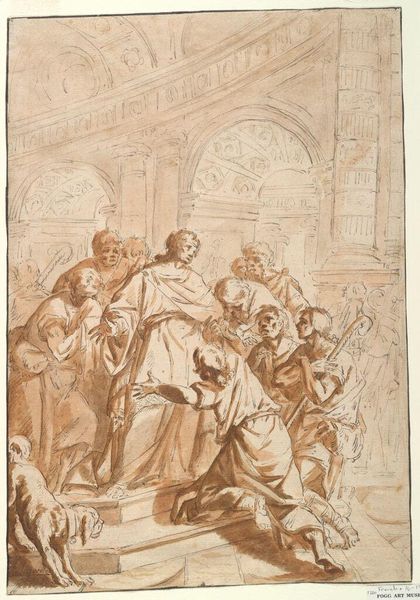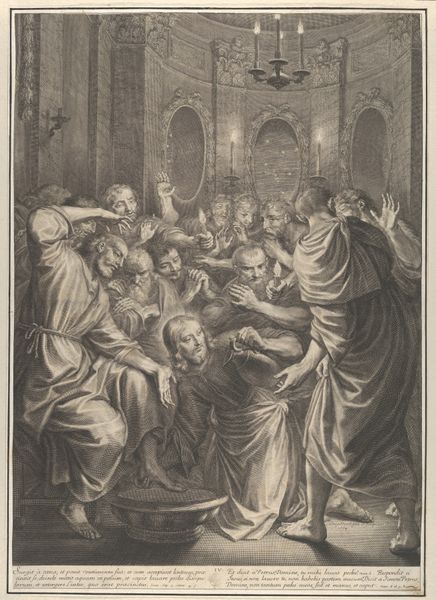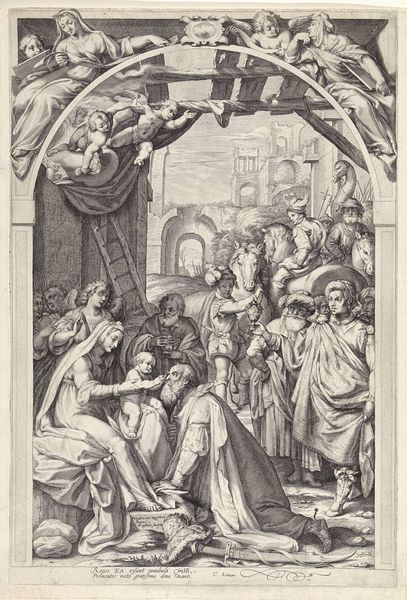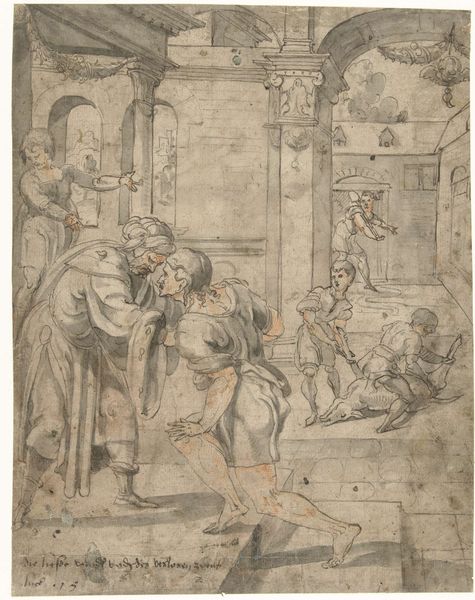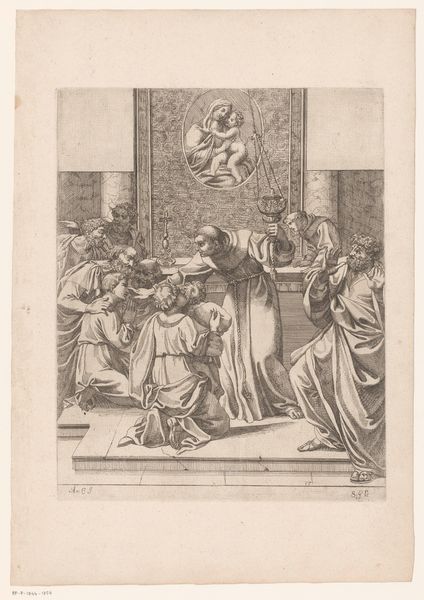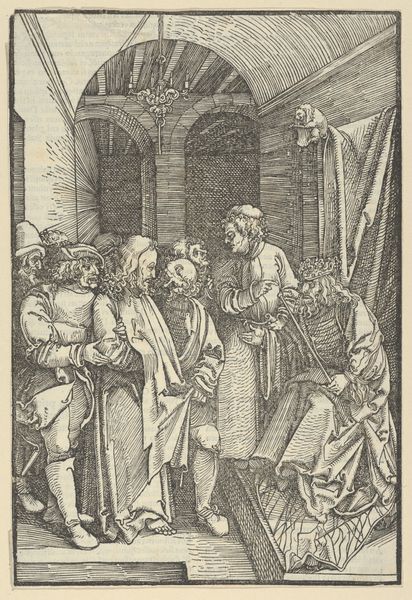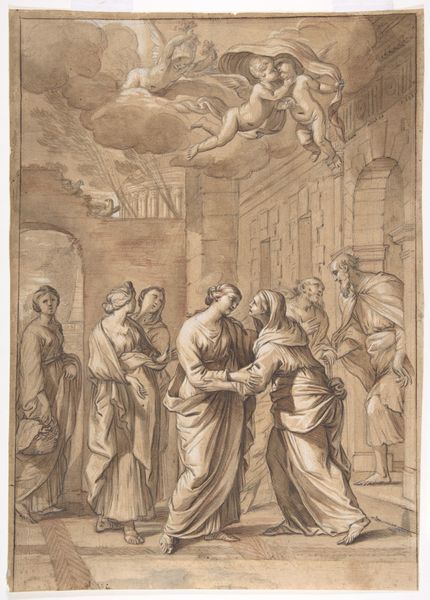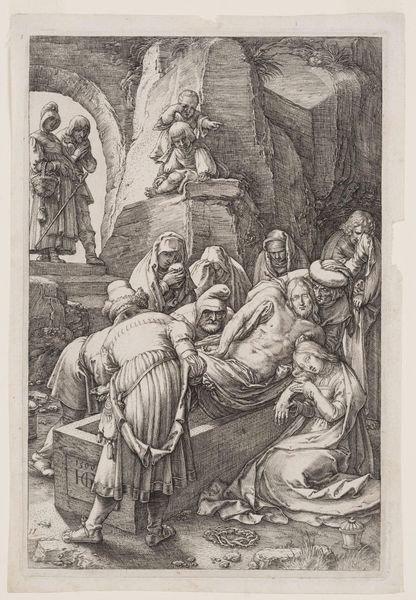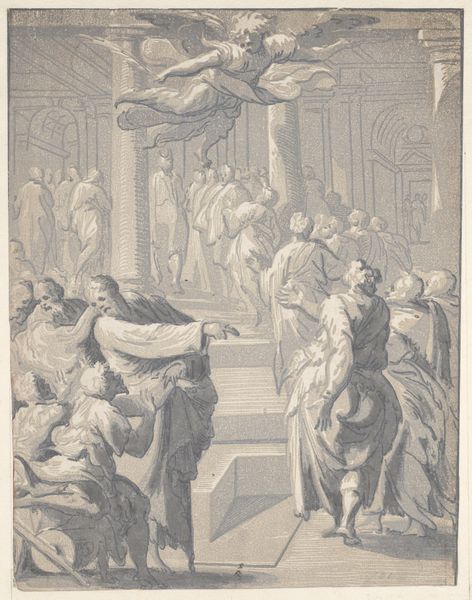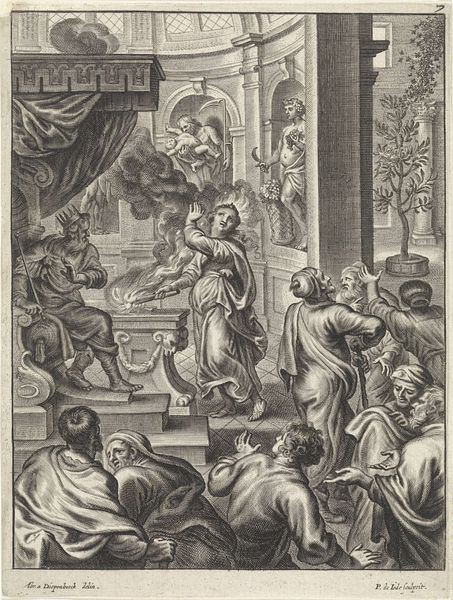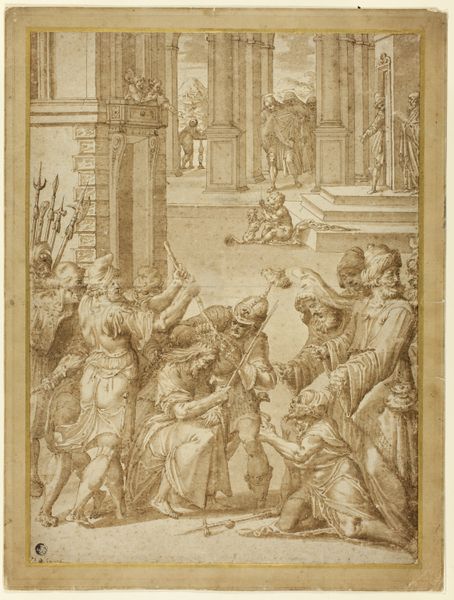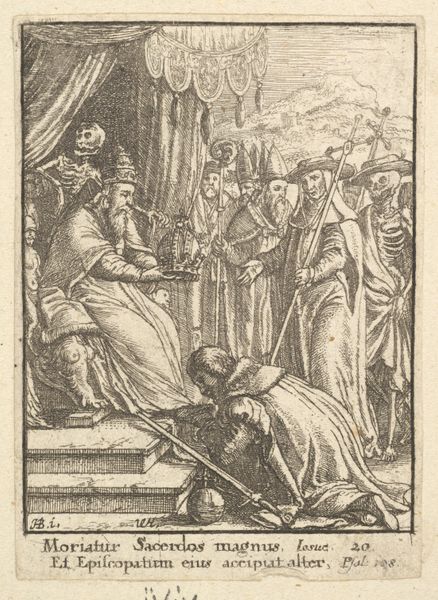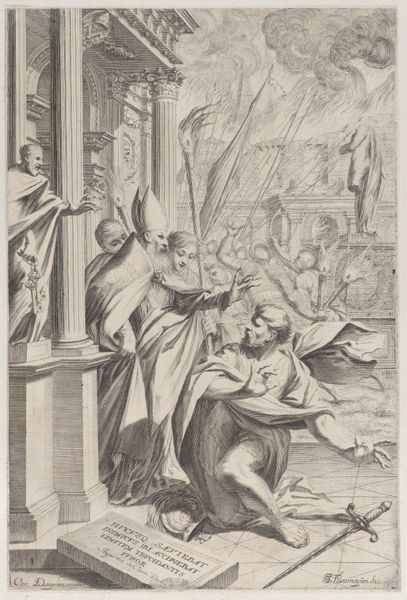
print, engraving
#
portrait
#
toned paper
#
light pencil work
#
narrative-art
#
mechanical pen drawing
# print
#
pen sketch
#
pencil sketch
#
old engraving style
#
figuration
#
personal sketchbook
#
pen-ink sketch
#
line
#
pen work
#
sketchbook drawing
#
history-painting
#
northern-renaissance
#
engraving
Dimensions: height 256 mm, width 189 mm
Copyright: Rijks Museum: Open Domain
Editor: So, this engraving is called "Esther before Ahasuerus," made sometime between 1490 and 1552 by Frans Crabbe van Espleghem. It’s a detailed print, with lots of figures and architectural elements, but it feels... stiff, almost theatrical. What symbols stand out to you? Curator: It is a Northern Renaissance print rendering a key moment in the Book of Esther, the story of courage and concealed identity. Look at Esther’s bowed posture—a complex symbol of supplication, of course, but also of shrewd political maneuvering. Note also the background figures, a collective body representing the people of Israel relying on Esther for intercession. This isn't just about an individual's bravery. Editor: Political maneuvering? I mostly see her as vulnerable in this setting. Is it possible that our modern perspective might impact that reading? Curator: Precisely. We must understand the visual language of the time. Ahasuerus sits elevated, yes, signifying power. But his posture, almost languid, suggests a potential for capriciousness, an indecisiveness Esther must navigate. And what of the crown? What connotations does it evoke to you, beyond mere kingship? Editor: Power, of course, but also responsibility... maybe even vulnerability, since his decisions affect so many. So, the crown becomes less about personal glory and more about cultural weight. Curator: Exactly! These aren’t simply illustrations. Each element carries a weight of cultural memory. Now consider how that changes your understanding of Esther's gesture. What did you see that resonated most in this piece? Editor: That reading makes this far more than just a historical scene; it's about navigating power through cultural symbols. I find that the weight of that history is beautifully portrayed. Curator: It’s a dialogue between personal courage and collective destiny.
Comments
No comments
Be the first to comment and join the conversation on the ultimate creative platform.
